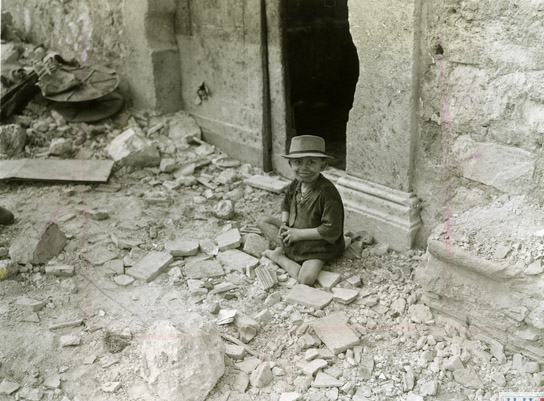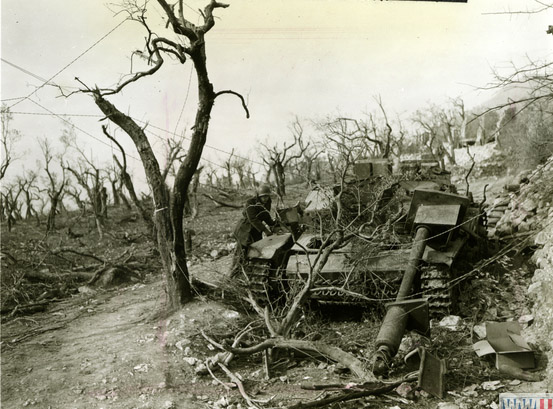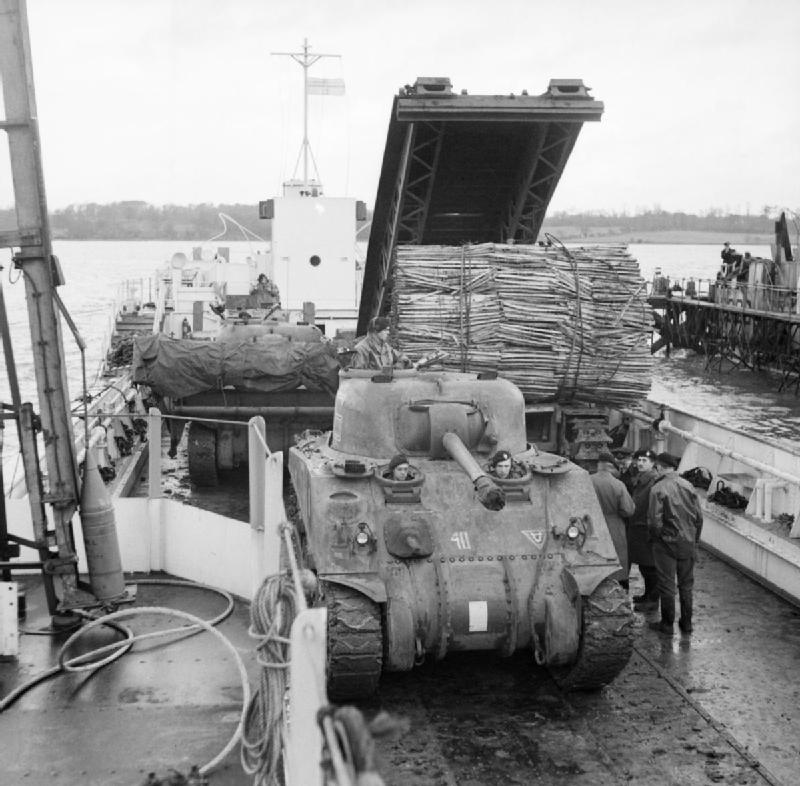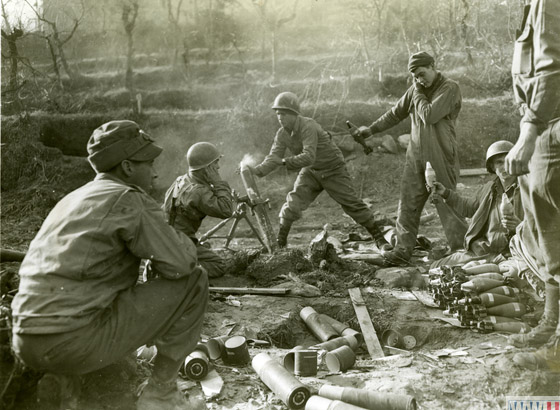Air Operations, Bismarcks
- AirSols SBDs attack targets in the Rabaul area. 25 42nd Medium Bomb Group B-25s attack the Tobera airfield at Rabaul at extremely low altitude with parachute fragmentation bomb clusters.
- 347th Fighter Group P-38s down 5 A6M Zeross over the Tobera airfield at Rabaul at 0900 hours. VF-17 F4Us down 15 Zeros over the Tobera airfield at Rabaul at 0900 hours. VMF-211 and VMF-215 F4Us and 3 VMTB-143 TBF crews down a total of 16 Zeros over the Rabaul area between 0900 and 0910 hours. 5 P-38s are lost.
- V Bomber Command A-20s attack targets around Cape Gloucester. V Fighter Command P-40 fighter-bombers attack the Cape Hoskins airfield on New Britain. P-39s attack barges in Rein Bay.
Air Operations, Europe
RAF BOMBER COMMANDBattle of Berlin
Evening Ops:
- 677 planes including 432 Lancasters, 241 Halifaxes and 4 Mosquitoes are sent to Berlin. 66 aircraft abort the mission.
- This night Harris calls for another maximum effort. The route to Berlin is a long northern flight over Denmark and the Baltic, well away from most night-fighter bases. Most of the diversions are early in the evening in the hopes of fooling the Germans in to believing there will be no main effort this night. Weather causes take-off delays twice before finally beginning around midnight. There is not much fighter action until the bombers reach Berlin. Most of the defending fighters have gone to Berlin and are waiting for the bombers. 17 Halifaxes and 10 Lancasters are brought down in the Berlin area. Pathfinders produce a concentrated and accurate marking. The main force is not so good. Time over the target is 03:13-03:33. Bomb tonnage is 1,887 tons including 1,050 tons of high explosives and 837 tons of incendiaries. 77 communities outside Berlin report bombs. Most of the bombs in Berlin fall in the south central, southern and southeastern districts of the city. It is a successful quickly known by Bomber Command Headquarter because there are gaps in the cloud cover and photos are brought back by the bombers.
- 26 Halifaxes and 20 Lancasters are lost on the mission along with 5 Halifaxes destroyed in crashes back in England. Aircrew casualties include 254 killed and 67 POWs.
- 63 Stirlings and 4 Pathfinder Halifaxes carry out minelaying in Kiel Bay 5 hours before the main Berlin operation. This is the first time that Pathfinder aircraft help a minelaying operation. 6 Mosquitos bomb Berlin 4 hours before the main attack and 18 Mosquitos bombed night-fighter airfields at Deelen, Leeuwarden and Venlo. 4 Mosquitos carry out a diversionary raid to Hannover and 6 more Mosquitos fly Serrate patrols at the same time as the main raid. 16 OTU Wellingtons carried out leaflet flights to France.
- 2 mine-laying Stirlings and 1 Serrate Mosquito are lost from these operations.
NETHERLANDS:
- 359th Figher Group P-47s are dispatched to dive-bomb the Leeuwarden Airdrome, bu the mission in canceled when they fail to rendezvous with their escort, the 352nd Fighter Group.
FRANCE:
- Led by pathfinder B-24s equipped with new GH radar, B-24s of the 2nd Bomb Division's 93rd and 446th Heavy Bomb Groups, escorted by 122 P-47s, are dispatched to attack two V-weapons sites near Bonnieres. Both groups are subsequently ordered to bomb the same target, but an early accidental release of bombs results in a widely dispersed and largely ineffectual bombing pattern.
ITALY:
- XII Bomber Command B-26s attack bridges at two locations.
- XII Bomber Command B-25s attack a marshalling yard at Orte.
- XII Air Support Command A-20s attack Cisterna di Latina.
- XII Air Support Command A-36s attack Atina, tactical targets in the US 5th Army battle area, and a marshalling yard and other rail targets.
- XII Air Support Command P-40 and P-47 fighter-bombers attack a road junction, and P-40s also attack several defended towns.
- Throughout the morning, from about 0720 to 1150 hours, fighter pilots of the 12th Air Force's 31st, 33rd, 79th, and 324th Fighter Groups and the independent 99th Fighter Squadron down 23 Luftwaffe fighters and damage or possibly down 11 others.
ITALY:
- 15th Air Force B-24s attack a marshalling yard at Ferrara.
- 15th Air Force B-17s attack a marshalling yard at Verona.
- 64 15th Air Force B-17s drop more than 9,000 20-pound fragmentation bombs on the Aviano Airdrome to prevent the Luftwaffe from staging aircraft through it for attacks on the Anzio beachhead. At the time of the attack, 56 Luftwaffe aircraft are counted in dispersal areas on the ground, but only 1 is definitely destroyed in the attack.
Air Operations, Marshalls
41st Medium Bomb Group B-25s attack the Maloelap Atoll. The 5 A6M Zeros that intercept the B-25s are the last Japanese Navy fighters encountered by USAAF aircraft over the Marshall Islands.
[Air Operations, New Guinea
V Bomber Command B-25s attack coastal targets of opportunity.
[Air Operations, Pacific
22 Corsair fighters and 6 pilots are lost in a severe storm while flying from Gilbert to Ellice Islands.
[Air Operations, Solomons
16 XIII Fighter Command P-39s strafe targets in the Shortland Islands.
[Battle of the Atlantic
- 2 'wolf-packs' totalling 20 U-boats are totally prevented from interfering with Convoys OS-66, KMS-40 and ON-221 by RAF Coastal Command.
- The German submarine U-271 is sunk by US naval land-based aircraft (VB-103) in the North Atlantic area.
- U-571 is sunk by Sunderland 'D' of no 461 Squadron RAAF. A radar contact is followed by a visual sighting of the submarine which is attaced through a barrage of flak. A second attack resulted in the sinking of the U-boat.
|
|
Britain, Home Front
Foreign Secretary Eden makes a statement in the House of Commons giving details of Japanese atrocities against prisoners of war.
[CBI
BURMAThe 65th Regiment, Chinese 22nd Division, crosses the Ahawk Stream.
[Eastern Front
In the Leningrad sector the troops of the Volkhov Front take Lyuban and several other small towns to the south as they push on toward Chudovo. South of Kiev von Manstein is assembling tank forces from both 1st Pzr and 8th Armies to relieve the Korsun pocket. The movement of both sides is becoming difficult in this sector because occasional warm days turn the ground into a sea of mud. This freezes solid each night, trapping vehicles. The Soviet tanks are better suited for such conditions because they generally have wider tracks. The surrounded Germans themselves manage to encircle 2 Russian armored corps, the XX and XXIX, but the Russians succeed in breaking out.
NORTHERN SECTORAs his army group falls apart, Kuchler issues orders calling for the withdrawal of the 18th Army to the line of the Luga River to prevent its annihilation. Lyuban falls to the 54th Army.
SOUTHERN SECTORThe 1st and 2nd Ukrainian Fronts link up near Zvenigorodka, the town falling to the 6th Tank Army after a brief battle. Leib's XLII and Stemmerman's XI Corps are isolated. The Stavka immediately call for the destruction of the pocket, the 2nd Ukrainian Front being make responsible for this operation with the 27th, 52nd and 4th Guards Armies. Inside the pocket, centered on Korsun-Shevchenhovsky, some 56,000 men of the 57th, 389th, 72nd and 88th Infantry Divisions, 5th SS Panzer Grenadier Division Wiking and SS Brigade Wallonie prepare to break outh to the west. Gen Stemmerman, commanding XI Corps, takes control of the combined force. Outside the cauldron, Manstein begins preparations for a reliev attack, the III Panzer Corps being released from the Uman sector and the XLVII Panzer from Kirovograd. The counterattack will begin as soon as these forces arrive.
Corps to make plans for a relief operation. [Italy
In the US 5th Army's VI Corps area, assault elements of the British 1st Division reach positions 1-1/2 miles north of the Factory, then halt to regroup for an assault on Campoleone. The British X Corps continues its struggle to expand the Garigliano bridgehead. In the II Corps area, the 1st Battalion of the 168th Infantry, 34th Division, after getting a few men to Hill 213, falls back to the river. By dawn the 3rd Battalion has a small bridgehead across the Rapido near Cairo. In the FEC area, the Algerian 3rd Division repels determined counterattacks between Belvedere Hill and La Propaia.
[Images from January 28, 1944
|
|
|
|
Moving Up To The Front |
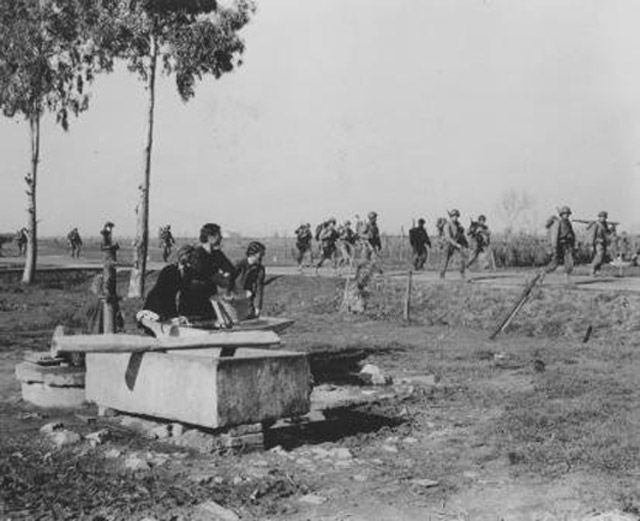 |
